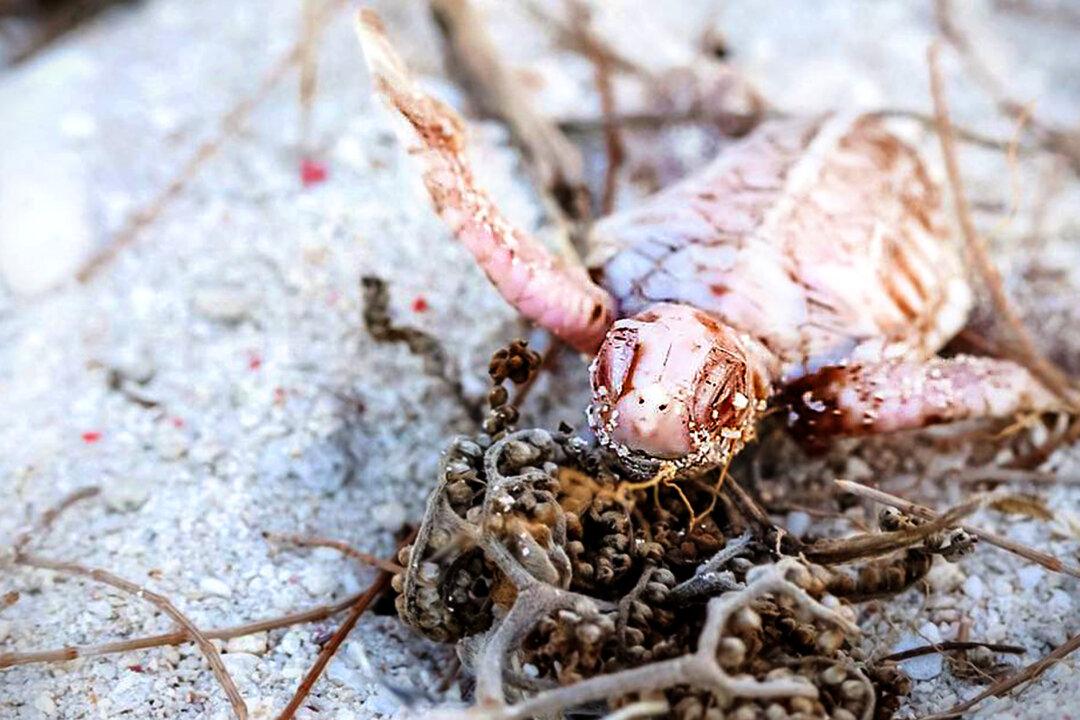A baby albino green sea turtle has been spotted making its way across the sand in Australia. The hatchling has a rare pink coloration due to lack of cell pigmentation, and marine experts are excited by the find. But they fear for the turtle’s survival.
The hatchling was spotted on the shores of Lady Elliot Island off the coast of Bundaberg, Australia, early March. Usually dark gray and green with a pale yellow underbelly, this hatchling emerged pinky-white with red eyes, tell-tale traits of albinism.





